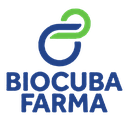Executive Secretary

VIII International Symposium on Chemistry and Pharmaceutical Sciences
SICF
VIII Symposium "Design, Obtaining and Development of Drugs"
Abstract
Introduction: Jatrapha gossypifolia L., due to its antimicrobial, anti-inflammatory, analgesic, healing and antioxidant properties, is a species with high potential for the management of acne. The inclusion of its extracts in semisolid formulations with components suitable for this pathology could improve patient compliance with treatment. Objective: Establish the influence of formulation variables on the technological quality, physical stability and acceptability of a Jatropha gossypifolia L. emulgel for the topical treatment of acne. Materials and Methods: Phytochemical screening of the hydroalcoholic extract (HAE) of the leaves of the species was carried out. The HAE formulation was optimized in the form of an emulgel, using a full factorial design 22, varying the concentrations of gelling agent (Carboxymethylcellulose) and emulsifier (Polawax). Technological properties (organoleptic characteristics, extensibility area, pH, apparent density and type of emulsion), accelerated physical stability tests (centrifugation and freezing/thawing) and sensory evaluation (acceptability and preference) were used as response variables. Results: The results of the phytochemical screening support the use of HAE in the formulation of an emulgel for acne. The selected components are non-comedogenic. The four formulations tested and their replica have good technological quality and acceptability; however, they show signs of instability in accelerated tests. Conclusions: Variations in the concentration of gelling agent and emulsifier do not markedly influence the technological quality, accelerated physical stability and sensory properties of the emulgel. Changes in the formulation and preparation process must be evaluated with a view to obtaining physically stable formulations.
Resumen
Introducción: Jatropha gossypifolia L., por sus propiedades antimicrobianas, antiinflamatorias, analgésicas, cicatrizantes y antioxidantes, es una especie con elevadas potencialidades para el manejo del acné. La inclusión de sus extractos en formulaciones semisólidas con componentes adecuados para esta patología podría mejorar el cumplimiento del tratamiento de los pacientes. Objetivo: Establecer la influencia de variables de formulación en la calidad tecnológica, estabilidad física y aceptabilidad de un emulgel de Jatropha gossypifolia L., para el tratamiento tópico del acné. Materiales y Métodos: Se realizó el tamazaje fitoquímico del extracto hidroalcohólico (EHA) de las hojas de la especie Se optimizó la formulación EHA en forma de emulgel, mediante diseño factorial completo 22, variando las concentraciones de gelificante (Carboximetilcelulosa) y emulsionante (Polawax). Se emplearon como variables respuesta propiedades tecnológicas (características organolépticas, área de extensibilidad, pH, densidad aparente y tipo de emulsión), ensayos de estabilidad física acelerada (centrifugación y congelación/descongelación) y evaluación sensorial (aceptabilidad y preferencia). Resultados: Los resultados del tamizaje fitoquímico avalan el empleo del EHA en la formulación de un emulgel para el acné. Los componentes seleccionados no son comedogénicos. Las cuatro formulaciones ensayadas y su réplica poseen buena calidad tecnológica y aceptabilidad; sin embargo manifiestan signos de inestabilidad en los ensayos acelerados. Conclusiones: Las variaciones en la concentración de gelificante y emulsionante no influyen marcadamente en la calidad tecnológica, estabilidad física acelerada y propiedades sensoriales del emulgel. Se deben evaluar cambios en la formulación y en el proceso de preparación con vistas a obtener formulaciones físicamente estables.
About The Speaker

Dr. Mirtha Mayra González Bedia

Discussion




